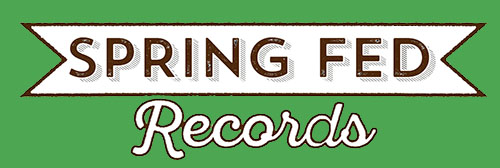Center for Popular Music
History of Recorded Sound
This is a physical exhibit that can be viewed at the Center from 1/18/2022 to 5/5/2022, Monday – Friday from 8:30 am – 4:00 pm. The below timeline coordinates with the items displayed in cases in the center. The pictures above this timeline are of the physical display and are provided here so that the display and timeline can be linked for you. At the bottom of this page you will also find a comprehensive presentation covering the history of recorded sound. For questions or comments about this display email: stephanie.bandel-koroll@mtsu.edu.




Recorded Music Timeline:
- In 1877 the human voice was recorded on tin foil by Thomas Edison. He used two needles to record on tinfoil one that recorded and the other for playback. This creation was called the phonograph. The first thing he recorded were the words to Mary Had A Little Lamb.
In 1887 tinfoil cylinders were replaced with wax cylinders. It quickly became apparent that recording and sharing music would be the dominant use for this invention. Wax cylinders were still in use up until the 1920s.
2. In 1888 the gramophone was invented, this was a device that recorded sound to disc instead of cylinder. The recording of sound to disc allowed for recordings to be mass produced. The Victrola was introduced in 1906, this was a device designed to fit in the home. A Victorla uses a 10 inch disc called a 78, these discs rotate at 78 rotations per minute (rpm). The 78 disc is shellac, this material is a brittle resin making shellac records breakable.
3. In 1948 Columbia Records introduced the new vinyl LP (long playing) record, these are 12 inches, rotate at 33 1/3, and micro grooved. Unlike its shellac counterpart vinyl is not abrasive and thus improved sound quality. An LP allowed for 10 or more songs to be put on one disc unlike shellac records which would have to be placed in physical record albums. These albums consisted of bound together record sleeves in book form that shellac records were placed in. This display features a Bruce Springsteen picture disc which is a vinyl record that can be played at either 33 1/3 or 45 rpms.
4. Next in popularity came the cassette tape, it was invented in 1930, but grew in popularity in the 50s when portable audiotape recorders were manufactured. In 1964 people could purchase a 30 minute cassette tape for $1.00 more than a vinyl album and enjoy the portability. Then, in 1966 the first 8 track tape cartridge (you can see all the tape guts exposed in this display) was first sold. The 8 track was designed to reduce issues with tape jamming but even though it produced better quality sound, the 8 track player lost popularity to the cassette player. A cassette player could also record sound (you can see one here that is a field recorder with the small microphone, and another handheld version that is gray. Sony introduced the Walkman in 1979 and this small portable cassette player could fit in your pocket, it was very popular.
5. The 1980s brought the emergence of the Compact Disc (CD) and the release of CD players. In 1988 CDs sold more than LPs. Portable CD players made it possible to listen to music on the go. In 1992 Sony introduced MiniDiscs (MD) to the digital audio market. These new compact discs (seen here on display) experienced limited success in the United States due to the high cost of the playback and recording equipment, and the quick introduction of CD-R’s which are compact discs that could be recorded upon and were affordable to consumers.
6. In the 1990s digital audio and the Internet lead to the invention of Moving Pictures Experts Group – 1, Layer 3 more widely known as MP3s. This format compressed audio files which allowed them to be easily sent from one computer to another. With this new technology emerged greater access to audio files and companies that would provide music sharing services, in this display there is a Newsweek article about Napster. Napster was a music file sharing service that allowed its users to download and share music files for free.
7. Record labels began releasing music on the internet in 1997, which led to greater use of the Internet for downloading and file sharing music. This created many issues with copyright laws. Then, in 2001 Apple introduced iTunes the digital jukebox, along with the iPod, which allowed for 1,000s of songs to be accessible in your pocket. Shortly after Apple launched the iTunes music store in 2003, which allowed users to legally, obtain songs through music Internet sales. In its first year iTunes sold 70 million songs at $.99 apiece. Four years later the Apple iPhone hit the market and this combined the iPod with cellular phone features. Spotify a Swedish audio streaming media service was founded in 2006 and is currently (2022) the world’s largest music streaming provider.
Evolution of Sound Recording Presentation























Contact Us
Center for Popular Music
Bragg Media & Entertainment Bldg.
Room 140
MTSU Box 41
1301 E. Main Street
Middle Tennessee State University
Murfreesboro, TN 37132
615-898-2449




